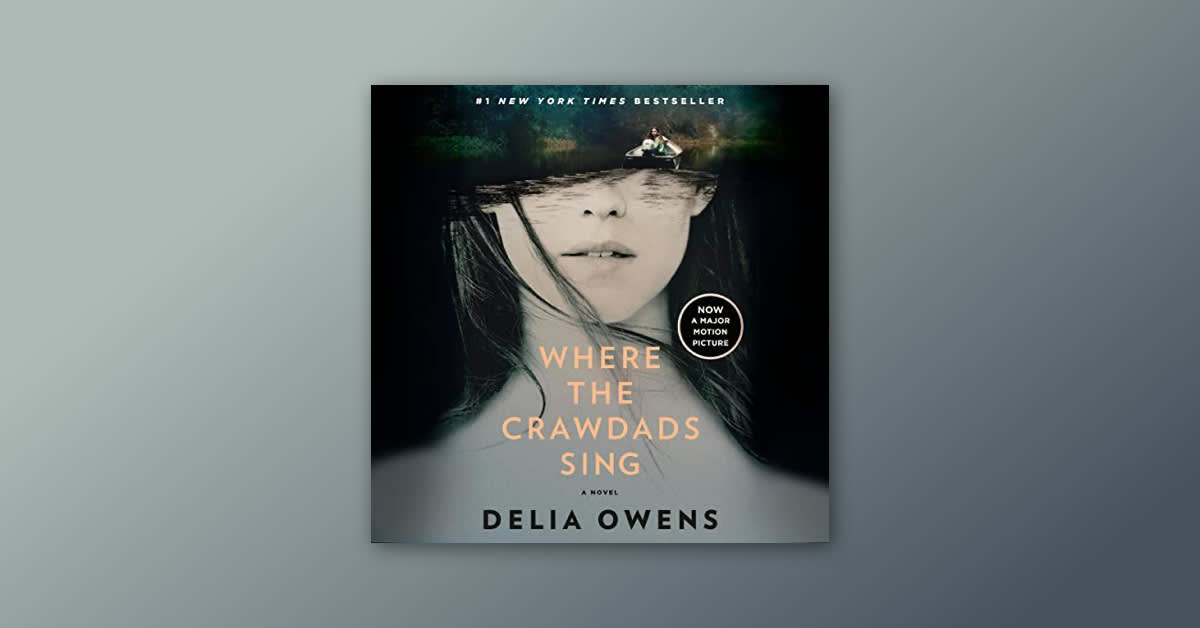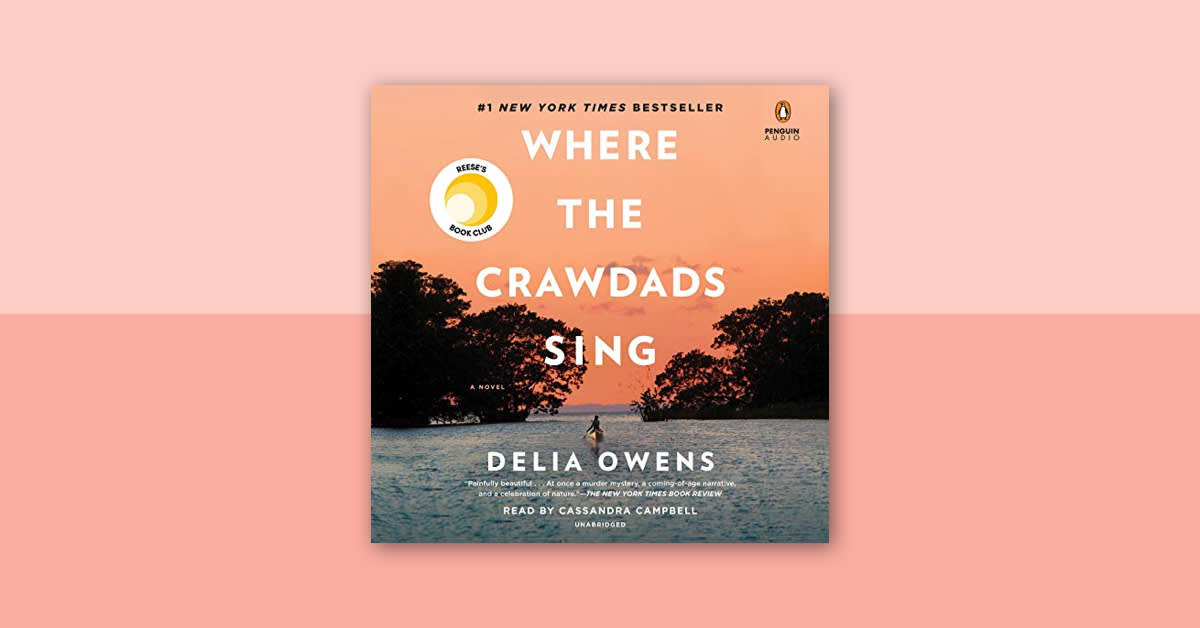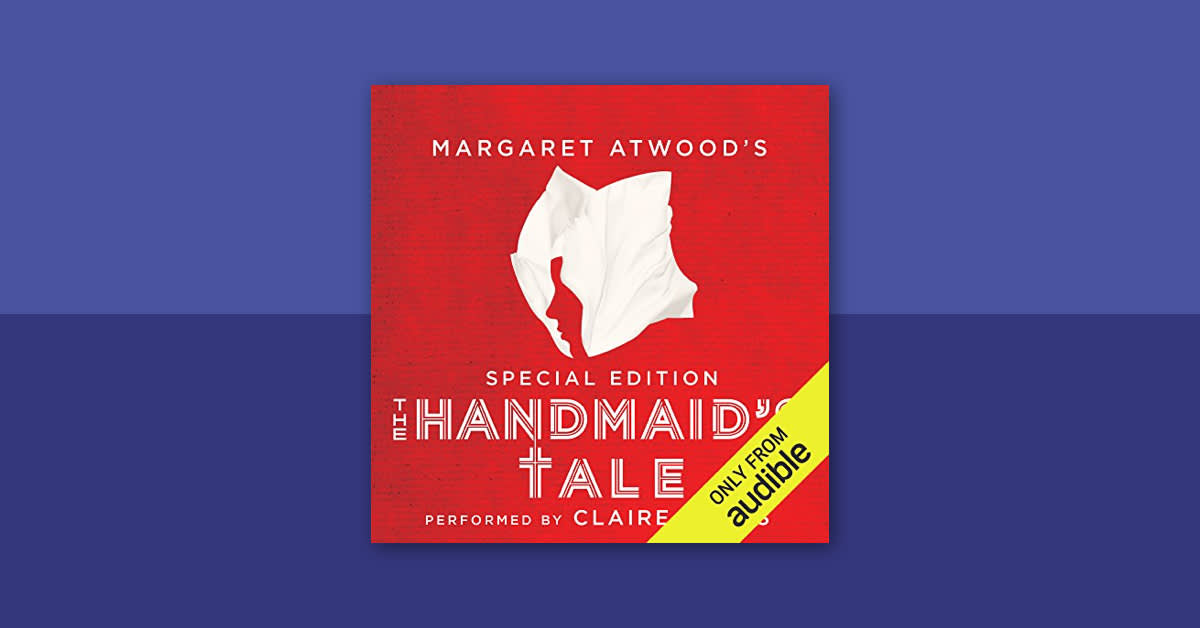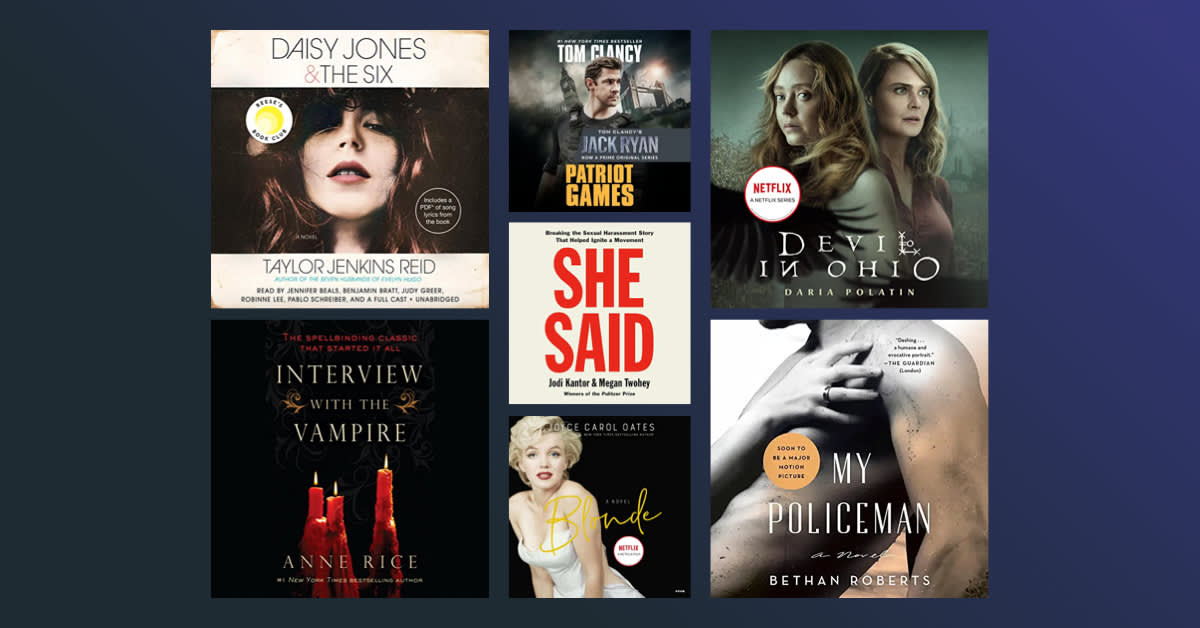From Taylor Swift, who was inspired to write an original song after reading Where the Crawdads Sing, to my boyfriend, who caught an earful during our most recent road trip and then purchased his own copy to finish the story, it seems that anyone who has indulged in Delia Owens's beautiful novel has been waiting for one thing—the chance see these characters come to life on-screen.
Produced by Reese Witherspoon's production company, Hello Sunshine, and Sony, with a worldwide release on July 15, the anticipated film adaptation of Where the Crawdads Sing is finally here! The novel has sold more than 12 million copies and has returned to the top of The New York Times fiction bestseller list in both print and audio. It is safe to say that with an opening weekend earning more than $17 million, the excitement that surrounds this novel remains high. But how does the film adaptation compare to the book? Read on to find out.
Warning: The following article contains spoilers for Where the Crawdads Sing novel and movie.
What is Where the Crawdads Sing about?
Where the Crawdad Sing travels between two timelines that slowly become a lyrical and poetic story. The first timeline starts with six-year-old Catherine Danielle Clark (also known as Kya) watching her mother walk away from her family—through most of the novel, she wonders in vain if she will ever return. Kya is left with her four other siblings, who soon follow their mother’s footsteps and leave their home in the marshes of North Carolina to escape their father’s abuse. Kya is devastated when her closest brother in age, Jodie, leaves without her. Little Kya is left alone with Pa, a physically abusive, alcoholic World War II veteran who, in a brief moment of kindness, refrains from getting too drunk and teaches Kya how to fish. When Pa receives a letter from Ma, he spirals out of control, burning any remaining reminders of Ma before leaving and simply never returning home. Kya begins to look at the plants and animals that surround her as a way to sustain herself. She trades mussels and smoked fish for supplies at a gas station owned by a Black couple, Jumpin' and Mabel, who befriend and look out for the young girl as if she were their own. She also develops a close friendship with an older boy, Tate, who teaches her how to read.
The novel's second timeline finds Kya as a young adult and further isolated from the people of the small town of Barkley Cove. Kya is pursued by Chase, who asks her out on a date that she reluctantly accepts. A year later, while still dating and believing they will be married, Kya makes the choice to sleep with Chase, only to be let down when she learns, through a newspaper announcement, that he is engaged to another woman. Three years elapse, during which Kya builds a career as a marsh wildlife expert and artist. Chase catches up to Kya with the intent of continuing their affair, which Kya refuses. Angered at being rejected, Chase beats Kya and attempts to sexually assault her. Kya is able to fight this attack off, telling him, “You bother me again, and I’ll kill ya!” Her threat is overheard by two men that Kya feels sure would never take her side if she reported the incident.
A few weeks after the encounter, Chase is found dead. Kya has an alibi—she was out of town on a conference with her editor. However, after the shell necklace she gave Chase turns up missing from the body and red wool fibers matching a hat of hers are found on his jacket, Kya is arrested and charged with his murder. For two months, Kya is held without bail, and then finds out that the town of Barkley Cove is seeking the death penalty if she is found guilty. Ultimately, her lawyer’s compelling arguments about the lack of solid evidence, along with Kya’s strong alibi and the town's known prejudice towards the "Marsh Girl," convince the jury that Kya is innocent.
The novel ends with Kya reigniting her relationship with Tate, who moves into Kya's house with her. She is finally respected by her community and recognized as an expert on marsh wildlife. The end of the criminal trial also brings back Jodie and his family, whom Kya embraces, as she and Tate never have children of their own. At the age of 64, Kya is found by Tate in her boat, having passed away in the arms of her true family—the marsh and its wildlife. While searching for a last will and testament, Tate finds a stash of poems Kya wrote under the pseudonym Amanda Hamilton, with one of the poems describing Chase’s death. Tate also finds Chase’s seashell necklace. Tate keeps Kya's secret hidden forever as he burns the poems and places the seashell on the shore to be washed away by the waves.
What are the differences between Where the Crawdads Sing book and movie?
The most notable differences between the film and the novel are in characterizations, and the order in which some events take place.
The novel provides us an insight into the life that Kya lived with her parents. We learn that her mother loved to paint, was from New Orleans from a well-off family, and that she gave everything up to be with Pa. The novel also provides a background story on how Pa ended up being such a difficult man. From unhealed war trauma to financial struggles to the abuse that led to both Ma and Pa’s departure, the novel contains a full description of both characters, while the film versions of Ma and Pa lack the same depth.
The level of isolation Kya experiences in Barkley Cove is not as apparent in the film adaptation. The people in this town really dislike Kya. Besides the awful “Marsh Girl” nickname, the actions and words of the townspeople are downright mean. In the film adaptation, we do get glimpses and glances of this treatment, especially in the school scene when the teacher continues to teach as Kya is being asked by other children where her shoes are. However the dialogue is not as harsh as in the novel.
There is no mention of the “old reading cabin” in the film. In the novel, Kya finds an abandoned cabin, where Tate later teaches her how to read. In the film adaptation, Kya is taught to read in several locations, including the woods between the marsh and the beach. It is only when Kya gets really comfortable with Tate that she invites him to her home. The same cabin proceeds to serve as a hiding place for Kya, first when she is “hunted” by social services and later when she is hiding from Chase. The film replaces Kya's hiding from Chase in the reading cabin with her hiding out and falling asleep in her boat.
Chase’s character is portrayed as less emotionally involved in the film, which is contrary to the slow pace in which Kya and Chase’s relationship develops in the novel. In the film adaptation, Chase is portrayed as an antagonist from the start—wanting only a physical relationship with Kya. In the novel, Chase starts out making a move on Kya, which she rejects and then runs away from. The novel mentions that they do not see each other for 10 days before Kya speaks to Chace again. The book presents Chase as a devoted lover who gradually, through callousness and social pressures, becomes an antagonist.
In the novel, Tate sees Kya’s drawings and talks Kya into sending her samples to different publishers. The film adaptation finds Kya trying to save her home, which leads her to reach out to different publishers until she is picked up by one.
In the film adaptation, Kya is running errands in town when she runs into Chase and a blonde (Pearl), who introduces herself as Chase’s fiancé. This scene is way more dramatic than in the novel, where Kya finds Chase and Pearl’s wedding announcement in the local newspaper.
The film shows Kya sharing more of who she is with her lawyer, while in the novel, she spends mostly silent moments with Tom, her only request being to “get me out one way or the other.”
Kya and Tate’s relationship is a slow burn that keeps us rooting for Tate through the entire novel. Kya becomes a woman (literally) while with Tate, and they have a relationship where they share different moments of vulnerability with each other. The film quickly describes their romance, choosing instead to focus the slow burn on the mystery plot of the title.
Where is Amanda Hamilton in the film? Throughout the novel, Kya recites Amanda Hamilton poems, as she is her favorite poet. The novel ends with Tate going through Kya’s journals, where he discovers that Amanda Hamilton was Kya’s pseudonym. The film’s end has Tate discovering sketches of Chase in Kya's old notebooks, along with a shell taped to the back page. There was no mention of the pseudonym or "The Firefly" poem that reveals Kya as his murderer. Like in the book, Tate throws the shell into the water to hide the evidence, burns the rope, and lets Kya rest peacefully with her secret.
Which version of Where the Crawdads Sing is better: the book or the movie?
Personally, I preferred the details and the poetry of the novel, but appreciate the way the film captures the beauty yet eeriness of the marsh. There are so many moments in the novel—excellently performed by Audie Award-winning narrator Cassandra Campbell—where I was deeply emotionally involved. In the film, I found that some of those same powerful moments were either cut or not as detailed as in the book.
In her letter to readers at the end of the novel, Delia Owens explains that she wrote Where the Crawdads Sing at a point in her life when she was feeling very isolated. This sense of isolation was fully evident when listening to the novel, while we rely on flashbacks throughout the film to establish the same. This novel evokes a lot of emotions—outrage at Pa, anger with the townspeople, and love for Kya and those who extend kindness to her. I even cried when Tate found Kya's body in her boat after all their years together. The film adaptation has elements of magical realism, which made me cry when I saw how Kya turned into a little girl reaching for her mother as she found her way to death. The extra layer of details in the novel left me with such a severe book hangover that I have only been able to complete a small handful of titles in the months since I devoured Where the Crawdads Sing.
With that being said, people who have not listened to this underestimated, poetically written, beautifully narrated novel, should do so, and then head on out—way out yonder—to watch the Where the Crawdads Sing movie.





